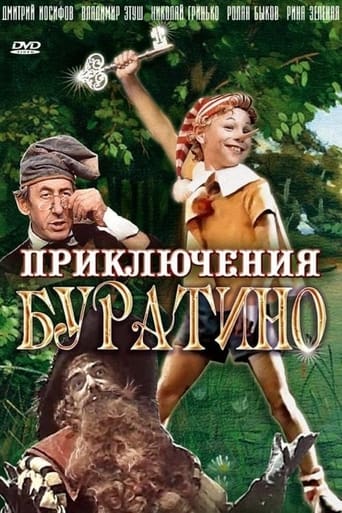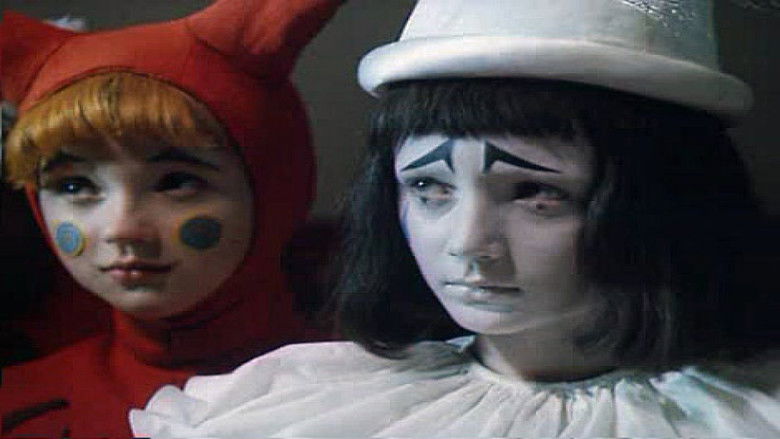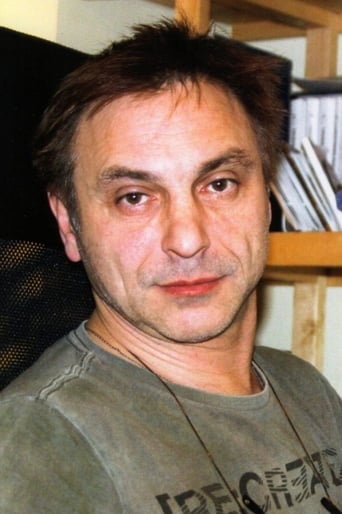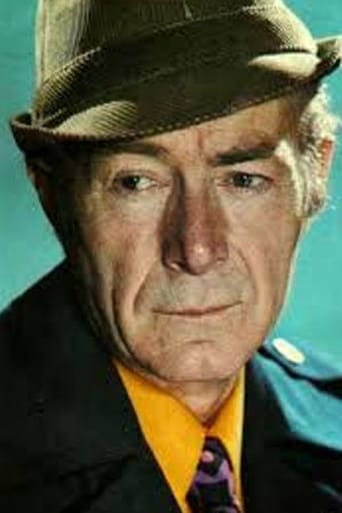

The Adventures of Buratino (1975)
A wooden boy Buratino tries to find his place in life. He befriends toys from a toy theater owned by evil Karabas-Barabas, gets tricked by Alice the Fox and Basilio the Cat and finally discovers the mystery of a golden key given to him by kind Tortila the Tortoise.
Watch Trailer
Cast


Reviews
its music. the emotions. the characters. and the fragments from the book. for few generations from the East, "The Adventures of Buratino" remains one of the most important memories from childhood. a kind of embroidery of feelings who has a lot of similarities with the circus show or with the games in backyard but who preserves, against the passing decades, its fresh flavor. the face and the voice of Dmitry Iosifov, the terrible huge Vladimir Etush as Karabas - Barabas, Arlekino and Malvina, the cat and the fox, the poor Carlo and the last episode. all as gems from a box of secret treasure.it is almost impossible to describe the state, front to TV screen, in each Sunday, for see a new slice of well known adventures who are different by the reading pages. sure, only emotional memories of the child inside us. but important for this small detail. because " The Adventures of Buratino", more than example of Soviet cinematography, it is testimony about a period from the recent history.
"Buratino" was Aleksey Tolstoy's retelling of Carlo Collodi's "Pinocchio". "Priklyucheniya Buratino" is a completely wacko movie version. Watching it, you probably wouldn't guess that it came from the Soviet Union - least of all from the stagnant Brezhnev era - but this is one of the coolest movies that I've ever seen. It's basically the story packed with hokey '70s music, especially the end scene. What a combination for something set in 1700s or 1800s Italy! One scene in particular reminds one of Jackie Chan's movies (you'll know it when you see it). They must have had fun making this movie.Anyway, a lot of fun.
Bu! A real "boo" in this family feature is a weird cricket and a malicious talking rat (its presence is simulated by a naughty shadow).Ra! Or rather "rah"! The movie is one delicious treat for anybody who has ears to hear and eyes to see. Personally was quite enchanted by this movie in my early childhood. "Rah!" to Buratino ("A ya govor-r-r-ryu..."). "Rah!" to Karabas Barabas. "Rah!" to Kot Bazilio and Lisa Alisa. "Rah!" to Duremar. "Rah!" to everybody behind this cinema product.Ti! Tea. After watching the film it is very important to have two or three cups of tea with some candies. To ponder on life's meaning is essential.No! No disappointment during the film at all. Only crazy ecstasy ("Kva!").Russian Buratino is a firestorm. His "birth" scene is one of the best in movie industry. Buratino is making good use of wooden sticks in combat. Bang, bang and Arlekin is down on the floor. At the same time he is no evil imp, but a good fellow and a reliable friend. Then goes Buratino's voice: it is very loud, high, and disturbing, with wonderfully pronounced "r-r-r-r" sounds.What makes this movie so special is frantic music and songs. When watching some musical, there is a feeling that one or two good songs are wrapped into the rest pointless "add-ons". But here every song and every piece of music counts. The words are clever, too: "Na duraka ne nuzhen nozh..."One musical piece, when the dolls are jumping into the old chest, is simply not of this world, though quite simple.A few years ago there was a heavy metal composition "Buratino" on the "Radio of Russia" wave. This new version of the old tune sounded great, adding even more "toughness" to the perception of the original.One of the IMDb reviewers compares "Buratino" heroes to Japanese anime characters. That's err... weird, but it has a point.The highest mark for this one is all right. Thank you for attention.
It seems that fairy tale films were considered by Soviet filmmakers to be an important genre, as studios devoted large budgets to them, and some directors, like Alexander Row, even specialized in them. This is a film that I happened on at a website devoted to Russian DVDs, videos and CDs. It offered generous clips of most of the films offered, and the look of this particular film really struck my fancy. Even so, when it arrived, I was unprepared for how seriously wacky it turned out to be. It's easily as strange or stranger than `The 5000 Fingers of Dr. T.'`The Adventures of Buratino and the Golden Key' was Alexander Tolstoy's re-telling of the classic story of Pinocchio, which he remembered from his childhood, but had modified and rewrote over the years. Tolstoy's version has since become a classic in its own right in Russia, and this filming of it was apparently made for Soviet TV in 1975. It's in two separate parts, each about an hour long.Buratino (i.e. Pinocchio) is played by a remarkable little actor who's kind of a funny-looking kid to begin with, and is transformed into a manic, almost frighteningly cheerful imp by the bizarre costume and makeup he wears. His high-pitched voice and shrill laughter could very well leave your ears ringing, if you have a low tolerance for it, but his performance is sharp, nuanced, and fascinating to watch. The characterizations overall are very broad and over-the-top, and there are lamentably clumsy attempts at slapstick humor by some of the adult actors. The young kids in the cast, however, are a delight to watch, as their performances are natural and apropos, and their costumes and make-up are strikingly beautiful, as are the sets and locations. Most of the younger cast portray puppets in the guise of various traditional theatre characters, (Pierrot, Harlequin, etc.). A couple of scenes almost remind me of live-action versions of Japanese anime, i.e. cute little kids in strange costumes, performing on bizarre, surreal sets.The overall look of the cinematography seems old-fashioned to me, and most of the time it's hard to guess when this was filmed. Maybe the 1940s, 50s, early 60s? But the occasional musical set pieces give its vintage away. When a character breaks into song, their voices suddenly and jarringly change into an over-reverberant, highly processed acoustic. The swinging rhythms and accompaniment clearly show signs of being from the latter half of the 20th century. Equally jarring is the old-fashioned look of the cinematography, sets and costumes in contrast to the swinging, commercial jingle-like music. Some of the wackiest elements of the film are in these musical numbers, i.e. a kick-line of frogs (kids in frog outfits) dancing atop a high arched wooden bridge, before jumping into the water one-by-one. Street-cleaners dance joyfully in what appears to be a European town of the late 1700s or early 1800s, except that they are spraying the air with pressurized water hoses as they dance.There are a few actual puppets in the film, including what appears to be a cricket playing a violin and dispensing sage advice, an element left over from the traditional Pinocchio story. The wily fox and cat who continuously try to bamboozle Buratino are played by adult actors as a shabby pair of beggars, their costumes and makeup only subtly suggesting animal characters.Unfortunately, the DVD that I got (and supposedly the VHS version as well) are in Russian only, with no subtitles. Anyone familiar with the story of Pinocchio can more-or-less follow the story, and on the web is a synopsis in English of Tolstoy's version that parallels this film almost scene-for-scene. This is a fascinating bit of foreign exotica from the Soviet era, and I'm very glad I had the opportunity to see it. I recommend it highly to anyone who enjoys bizarre and colorful imagery on film. Even if you don't understand a word of Russian (as I don't), it's not very hard to follow, and it's a treat for the eyes.




